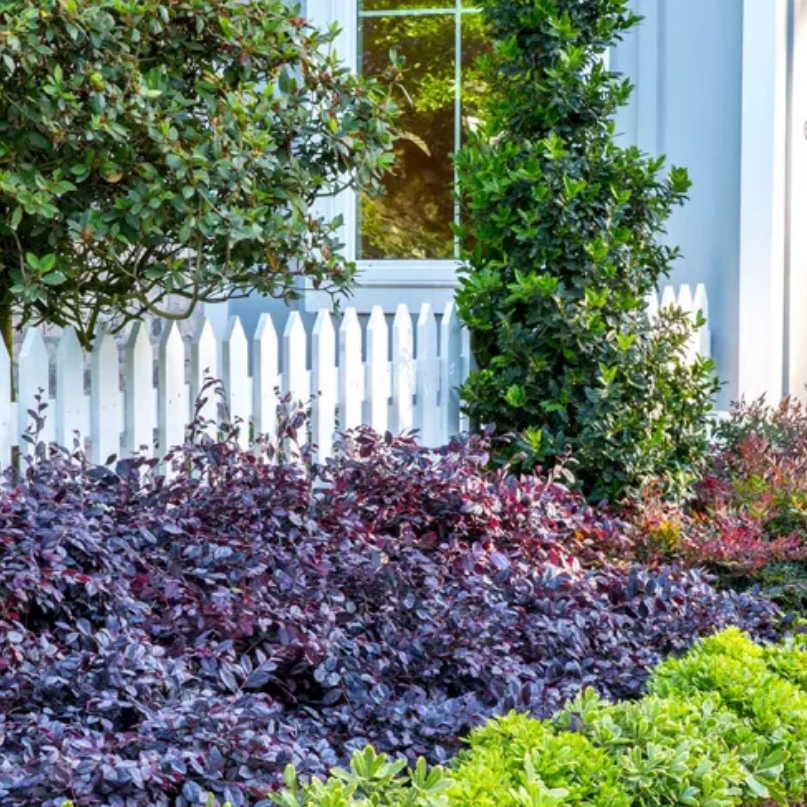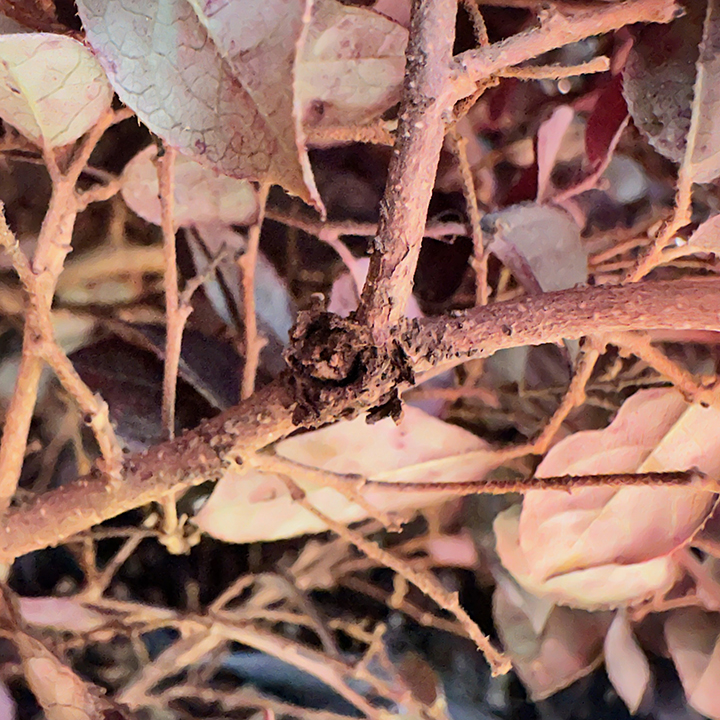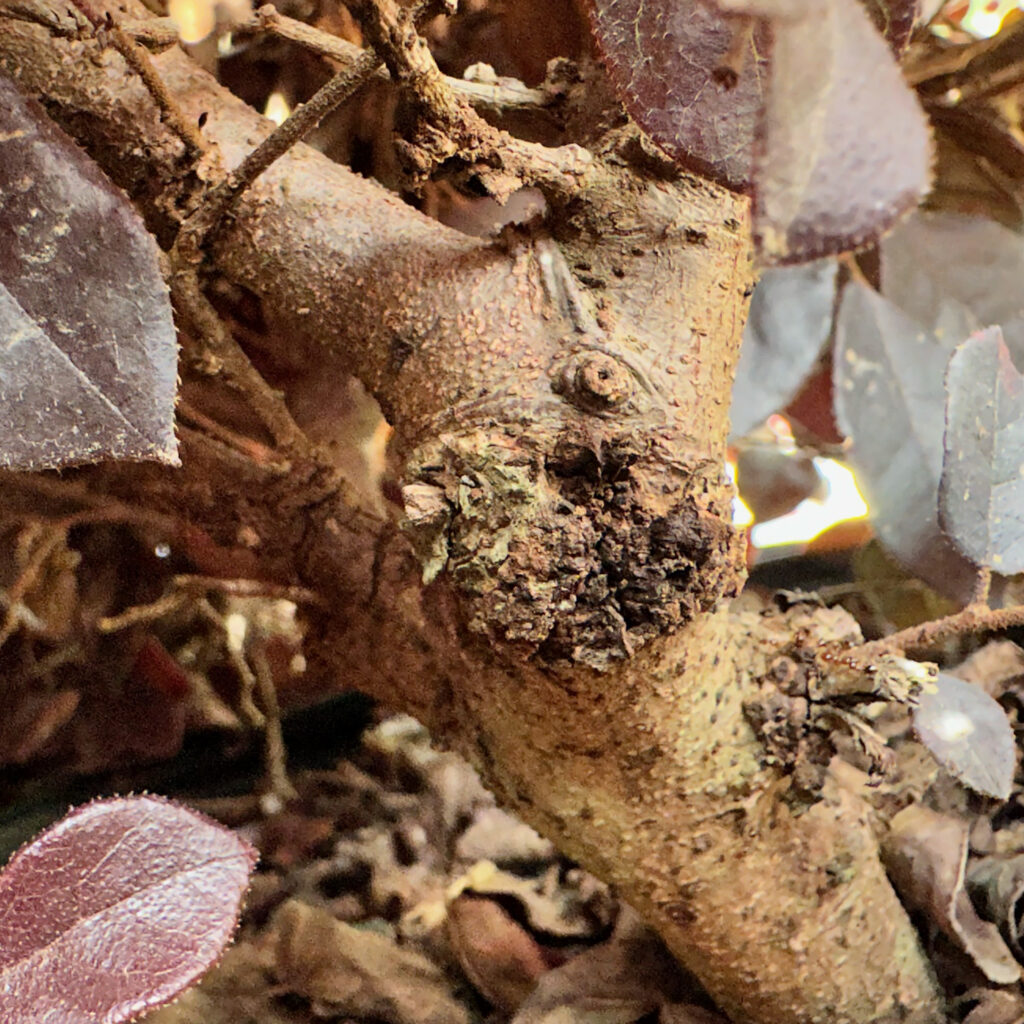Bacterial Gall of Loropetalums
Read more about Bacterial Loropetalum Gall including symptoms and prevention

Well, here we go again! This pest has been around for a while but our team hasn’t experienced many homeowners bringing in affected (er, rather infected) plant samples before now. And much like the now dreaded but common Crepe Myrtle Bark Scale, this issue affects one of our most commonly used, and beloved by many, landscape plants… the loropetalum aka Fringe Flower, pictured in full purple-leaved glory above.
What is loropetalum gall?
It’s a bacterial gall called Pseudomonas savastanoi. This gall is an issue for plants in the olive family, which includes oleander, forsythia, ash privet and as you might have guess, olives. One reason we expect to see it most on loropetalums is that this is a more commonly used plant and is usually pruned often. And while gardeners may have a forsythia or two, they often have many loropetalums.
There is a bit of information out there that suggests this particular gall may be a slightly more specific strain of Pseudomonas savastanoi and may not affect all plants in the olive family. To be safe, we suggest following the sanitation and prevention guidelines listed below on all olive family plants mentioned just above.
What does it do to loropetalums?
There are many different kinds of gall out there, and some are pretty innocuous, posing mostly just aesthetic concerns. This isn’t that. Bacterial gall of loropetalum causes plant decline by girdling, or cutting off nutrients and water to stems and branches above the gall. The most common indication that this may be present is branch die back, yellowing leaves and leaf drop.
What does loropetalum gall look like?
The first signs of loropetalum gall will look like small bumps on branches. They could easily be mistaken for a pruning scar. As the gall grows large, it ‘opens’ and begins to show ragged, rough edges. Mature loropetalum galls are easily visible thickened, large bumpy areas on plant stems.
How is loropetalum gall transmitted?
Understanding how a disease or insect moves to and infects new material is a vital step in controlling the spread of any pest! Loropetalum gall is spread from infected plant to healthy plant by physical means, meaning primarily through unknowingly pruning an infected plant then moving to another plant for additional pruning, without sterilizing pruning tools in between. Weather events that open wounds on plants can also allow for gall introduction.
So…. what can be done for loropetalum gall?
Sadly, once bacterial gall of loropetalums has been diagnosed, removal and discarding of infected plant material, and careful sterilization of pruning materials on existing healthy loropetalums (and other olive plant family members) is the best course of action. There is still research being done on the potential effectiveness of pruning under the visible gall (then sterilizing pruning tools, of course). Some research shows this can help slow the gall, but still unknown is whether this is a long or short term solution. One thing is for sure, it’s a little risky to leave a known infected plant in your landscape… because all it would take is one forgetful pruning session to spread it throughout your loropetalums.
Isopropyl alcohol and a bleach water solution both work to sterilize pruning materials. Sterilize when moving from one loropetalum plant to another, even if you see no signs of gall. It can take several months after infection for symptoms to show. Follow up pruning with several applications of copper fungicide for good measure.
Other suggested control methods include pruning loropetalums during dry weather, as the gall spreads more easily in wet conditions. And speaking of water, it’s recommended to avoid overhead watering and spacing plants well to aid in good air flow. This is so leaves, branches and stems don’t stay wet too long.
This is another opportunity to bring up timing; when you water matters, especially when it comes to plant diseases. Avoid watering at night, which allows water to sit on plant materials for a longer period of time. Instead, water in the early morning, when the sun will soon be present and help dry plant surfaces.
As with many diseases, naturally occurring warm, wet weather provides the ideal environment for disease spread. There isn’t much we can do about that; we live in Arkansas, where this is our normal spring and fall weather. But following good sanitation practices can help reduce spread.
Bottomline, look loropetalums over before purchasing, watch for signs of gall, remove plants if gall is evident, prune using proper sanitation practices, and proceed with a watchful eye. Like we mentioned earlier in this post; early signs can be hard to see, this pest is fairly new in our area, and it’s one we don’t want to become more of an issue.


